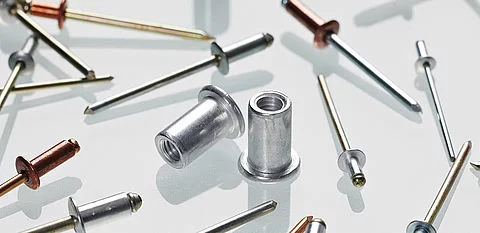What Are Blind Rivets and How Does It Work? – When it comes to fasteners, even the smallest variations in hardware can have a significant impact on the outcome and caliber of your project. These rivets are important to understand whether you’re working on cars, appliances, overhead doors, HVAC systems, or lighting.
On the Linquip website, among the many options available to you, you will find all the information you need to know about Rivets, as well as information regarding this marketplace. You can count on Linquip to provide you with as much general and reliable information about this topic, whether you’re a professional or a customer looking for a proper company. We recommend you review a list of all Rivets for Sale available in Linquip.
We would be delighted to provide you with more information on how we can help you generate revenue within your industry. Don’t hesitate to contact us if you have any questions! With Linquip’s Solutions for Each Company Level, you will be able to upgrade the capabilities of your organization in order to gain a competitive edge by taking advantage of a wide range of options to enhance your organization’s performance. If you are looking for the simplest or the most sophisticated marketing and advertising package for your business, we can help you ensure that your company gets as many customers as possible to grow your business.
What is a Blind Rivet?
The blind rivet, a ground-breaking fastener, gets its name from the fact that it may be inserted without access to or visibility of the back side of the object being riveted. The usage of solid rivets and bolts required access to both sides of a project to be able to use a rivet hammer on one side and a bucking bar on the other. This was the case before the blind rivet was created. Numerous projects with a “blind” side were unable to execute as a result of this challenging approach.
Blind rivets are inserted into a small hole in the material you are riveting and are made up of a rivet and an integrated mandrel. The mandrel is then pulled back while the rivet is held in place with a riveter. The rivet is deformed when the mandrel is drawn back by pressing the sides outward until the mandrel breaks. This is what creates the rivet’s enlarged rear side, which in turn holds the materials together.
The material of the rivet and then the material of the mandrel are often used to classify blind rivets. If you see “aluminum/steel,” for instance, that refers to an aluminum rivet with a steel mandrel. Stainless steel, nickel-copper alloy, steel, and various grades of aluminum are the most common materials used for these fasteners. To prevent corrosion and rivet weakening when looking for blind rivets, we advise always attempting to match the materials of the rivet and mandrel (for example, stainless steel/stainless steel construction).

Parts of a Blind Rivet
Rivet pin: The rivet pin, which will pass through the pieces of material being linked together, is the rivet’s primary body.
Rivethead: To prevent the rivet from slipping out of the material, the head will sit on the exterior of the material.
Rivet mandrel: When it is secured, the mandrel is inserted into the rivet gun through a slot. The mandrel is partially pulled through the rivet’s pin (or “body”) by the rivet gun, which subsequently deforms the pin to create a second head.
Rivet mandrel head: The mandrel head extends the rivet body before disappearing within the rivet to form a second head that fastens and secures the components that are being connected.
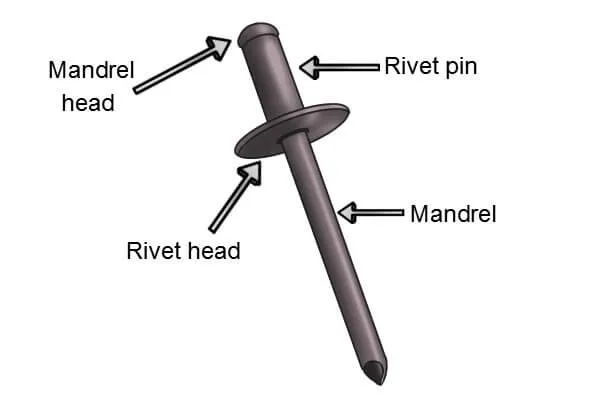
How Does Blind Rivet Work?
Pop rivets have two components. The rivet body, sometimes referred to as the shell or hat, is the first component, while the mandrel is the second (also known as the stem).
A hole is initially bored through the pieces that will be linked in circumstances when access to both sides of a component is restricted. The pop rivet is then brought into contact with the pieces after being introduced through the drilled hole. By pushing the mandrel into the rivet body with the aid of a pop rivet gun, the rivet expands to grasp the components that need to be attached. The mandrel snaps once it is grasped, securely securing the rivet in place. As a result, the joint becomes localized.
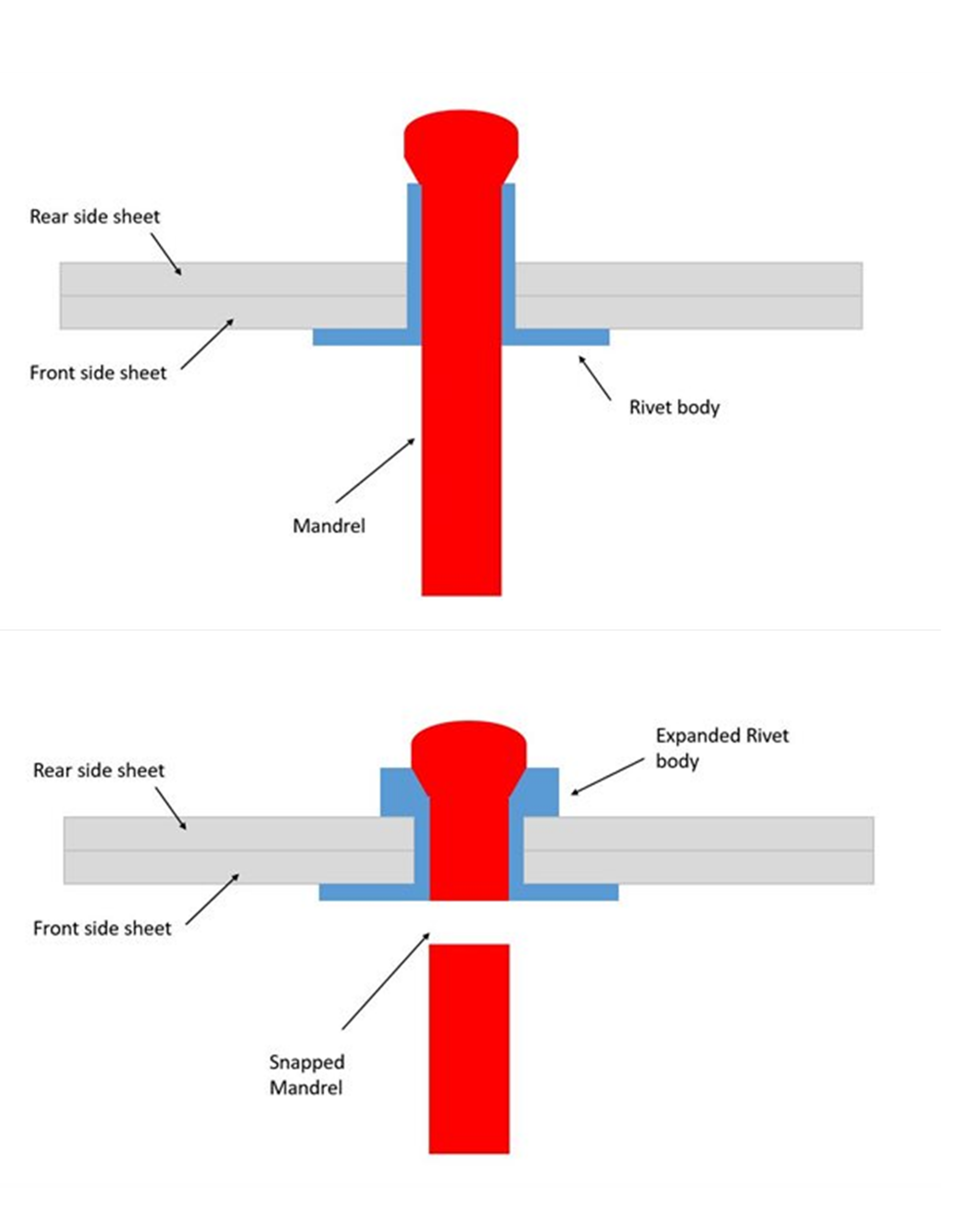
How Are Blind Rivets Installed?
Even while manual rivet drivers work just well, power tools are recommended when speed, convenience, and accuracy are crucial considerations. Using pneumatic rivet tools or pneumatic hammers is not too difficult.
When the user installs the fastener, whether it is on the end of the driver or in the pre-drilled hole, the blind rivet is driven into the hole. Once the rivet is in position, the installer pulls the trigger to use the force of compressed air for popping the fastener into place. The rivet’s tail contracts and secures the fastening in place.
Both pneumatic and hydraulic rivet installation tools accomplish the task by popping the rivet into position with pressurized air, depending on the application. The piston and collet start to retract as soon as the trigger is pushed because of hydraulic pressure inside the tool.
When this movement first starts, the jaws do not retract; instead, the jaw spring and follower keep pushing them forward. The jaws are drawn back and away from the nose tip as the collet further retracts. The cone angle in the collet causes the jaws to shut onto the rivet pintail while this opposite action takes place.
After the pintail is firmly grasped by the jaws, the pintail’s head is pulled towards the center of the rivet body, which causes the rivet body to expand.
The pintail head eventually encounters resistance that surpasses that of the break-neck as this movement continues. A solid, well-sealed junction is now created. The rivet is placed after the pintail separates. The set rivet is identified by its rounded head on the material’s blind side.
The piston, collet, jaws, jaw spring, and jaw follower are all propelled fully forward by air pressure when the trigger is let go. Until they make contact with the rear of the nose tip, the jaws are still holding the broken pintail. They are then pushed open, allowing the pintail to escape. The damaged pintail is then extracted from the nose assembly using a vacuum, if available.
Applications of Blind Rivets
Pop rivets may be used on a variety of projects to blindly fasten wood, metals, and even plastic. For instance, nails are frequently used in gutter construction at home, but due to the weight of the water and other debris that might clog the gutter, they aren’t always reliable for fastening. Pop rivets effectively join metal sheets together and provide a superior, more durable option.
The following are some of the most typical blind rivet applications:
- Affixing a nameplate or sign to a wall such that one side is accessible
- Affixing hinges without the use of nails or screws
- Because they offer a more durable structure than screws or nails, rivets are used in woodworking.
- Industrial uses where one side of a workpiece is often inaccessible, such as in the production of boats, cars, or airplanes
Advantages and Disadvantages of Blind Rivets
Benefits include:
- Being inexpensive.
- Allowing for portions connecting where back access is restricted.
- Being robust.
- Weighing less than nuts and screws (dependent on rivet material).
Negative aspects include:
- Being hard to remove once installed.
- Protruding from the surface of the sheet metal, perhaps posing a risk and compromising aerodynamics.
- If the rivet material is different from the metal pieces to be bonded, there might be corrosion problems.
Why Blind Rivets Are Used in Airplanes?
Blind rivets are used to join many pieces together in airplanes. They are frequently seen on the trailing edges of aircraft when access to the back side is restricted or nonexistent. Blind rivets can be used to join the trailing edges of an airplane, even if they are difficult to access.
For these difficult-to-reach components, blind rivets provide a quick and practical fix. They may be installed without access to the rear side. Instead, blind rivets are made expressly for attaching tasks when there is little to no access to the underside of the component.
Various Types of Blind Rivets
In what follows, some of the most important types of pop rivets are briefly described.
Standard Blind Rivets
Metal-to-metal fastening often involves the use of standard blind rivets. They have simple bodies and dome-shaped heads. The body of the rivet expands at its “blind” end when the mandrel is partially pulled through it, forming a second head to stably bind materials together.
Automotive, metals, construction, containers, electrical appliances, furniture, air conditioning, and heating are just a few of the sectors that employ standard rivets.
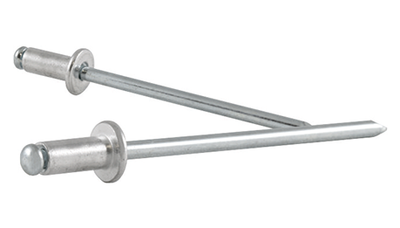
Sealed Blind Rivets
This particular style of the blind rivet has a sealed end. Unlike other types of blind rivets, this one’s mandrel head is enclosed within the sealed body of the rivet and does not protrude from the end. In order to fasten metal to metal, sealed rivets do not permit liquids to enter or exit.
While the head of the rivet is sealed, the mandrel’s head rests inside the rivet’s body. This keeps liquid from entering or leaving the component. They are appropriate for usage in the metal, building, and automotive sectors. Additionally, they may be found in containers, furniture, air conditioning, and heating systems, as well as electrical gadgets.
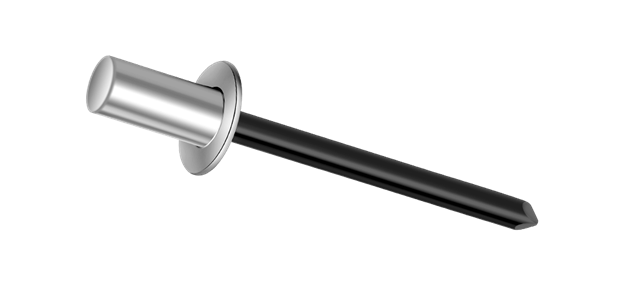
Peeled Blind Rivets
Peeled rivets increase the diameter of the locking head, giving it a larger bearing surface (underside of the head). The body enlarges as the mandrel is dragged through it, leaving a head with a flower-like form and four petals. The optimum application for this kind of rivet is joining metal to softer materials.
A head is formed by folding the sides (petals) of the rivet over, which secures the materials together. Peeled rivets function well in the construction business (plasterboard, coatings, and insulation) and may be used on trailers, plastic parts, electrical appliances, and upholstery (padded covering on furniture).
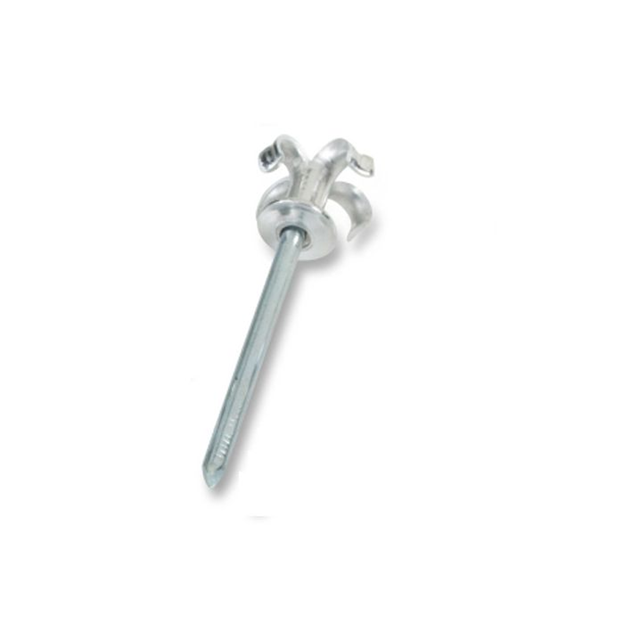
Grooved Blind Rivets
When installing softer materials like plastic and wood, this type of rivet’s body-encircling grooves provides tremendous holding power. For attaching metal to wood and metal to building supplies, including cement, bricks, and wood, grooved rivets are ideal.
The material is fastened together by the grooves on the rivet’s body that embeds into it. It is not necessary for the hole it enters to penetrate straight through the surface.
When the mandrel is pushed out of a grooved rivet, the rivet’s tail grows inside the material rather than forming a new head on the opposing side. As a result, the rivet’s head at one end grabs the object that is being attached to the material while the head at the other end grips the material with friction.
Construction, the metal sector, furniture production, electrical equipment, and injection-molded parts are the ideal applications for grooved rivets.
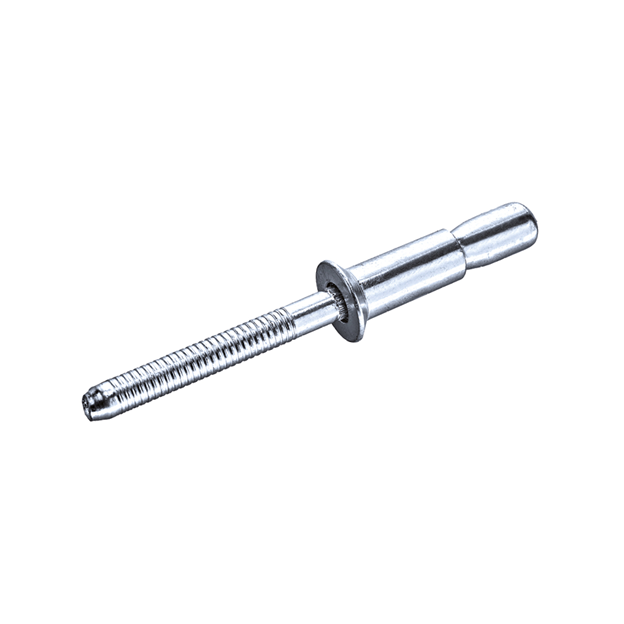
Download What is Blind Rivets and How Does It Work? PDF
You can download the PDF format of this post from here.
Buy Equipment or Ask for a Service
By using Linquip RFQ Service, you can expect to receive quotations from various suppliers across multiple industries and regions.
Click Here to Request a Quotation From Suppliers and Service Providers
Read More on Linquip
- What is Pop Rivets and How Does It Work? (A Comprehensive Guide)
- What Are Solid Rivets And How Do They Work? (Clear Guide)
- What Is The Difference Between A Blind Rivet And A Pop Rivet?
- 13 Types of Rivets + Applications & Working Principle
- The 10 Best Rivet Tool in 2023
- 9 Types of Pop Rivet + Working Principle (Clear Guide)
- The 8 Best Paint Sprayers of 2022 + Buying Guide
- 7 Types of Solder + Working Principle & PDF
- The 10 Best Angle Grinders of 2022
- The 10 Best Welding Machines in 2022 + Buying Guide
- 16 Types of Scaffolding + Components & PDF
- The 10 Best Electric Lawnmowers in 2022
- 28 Types of Clamps: A Complete Guide
- 4 Types of Solid Rivets + Working Principle
- What Is Flush Rivet And How Does It Work? (A Comprehensive Guide)
- How Springs Are Made? 5 Fundamental Steps (Clear Guide)

